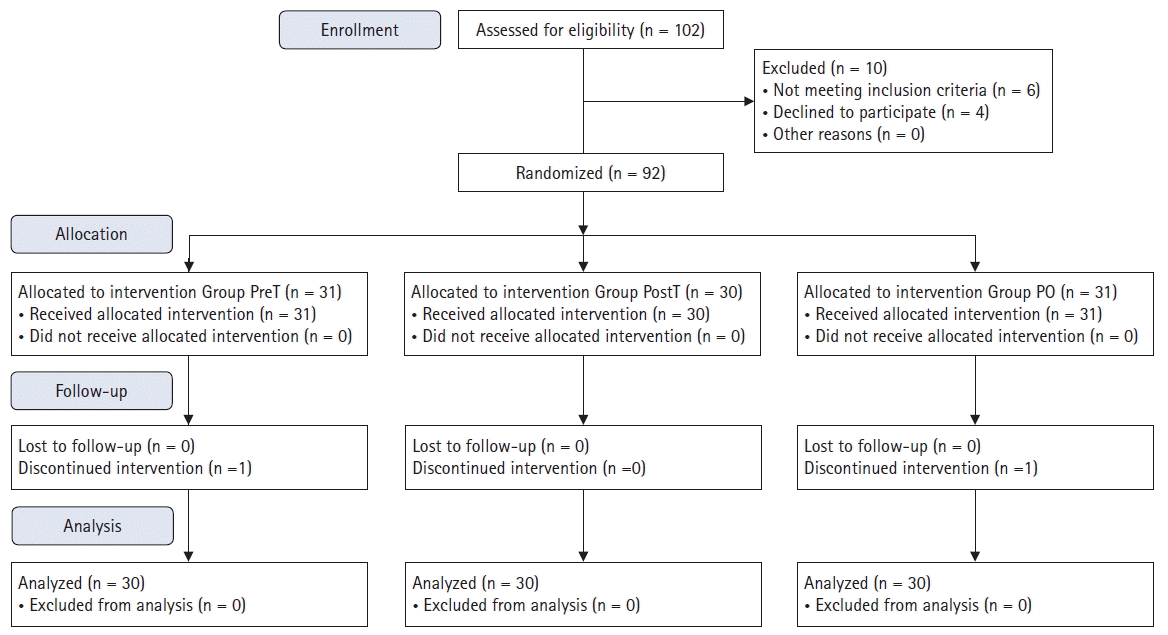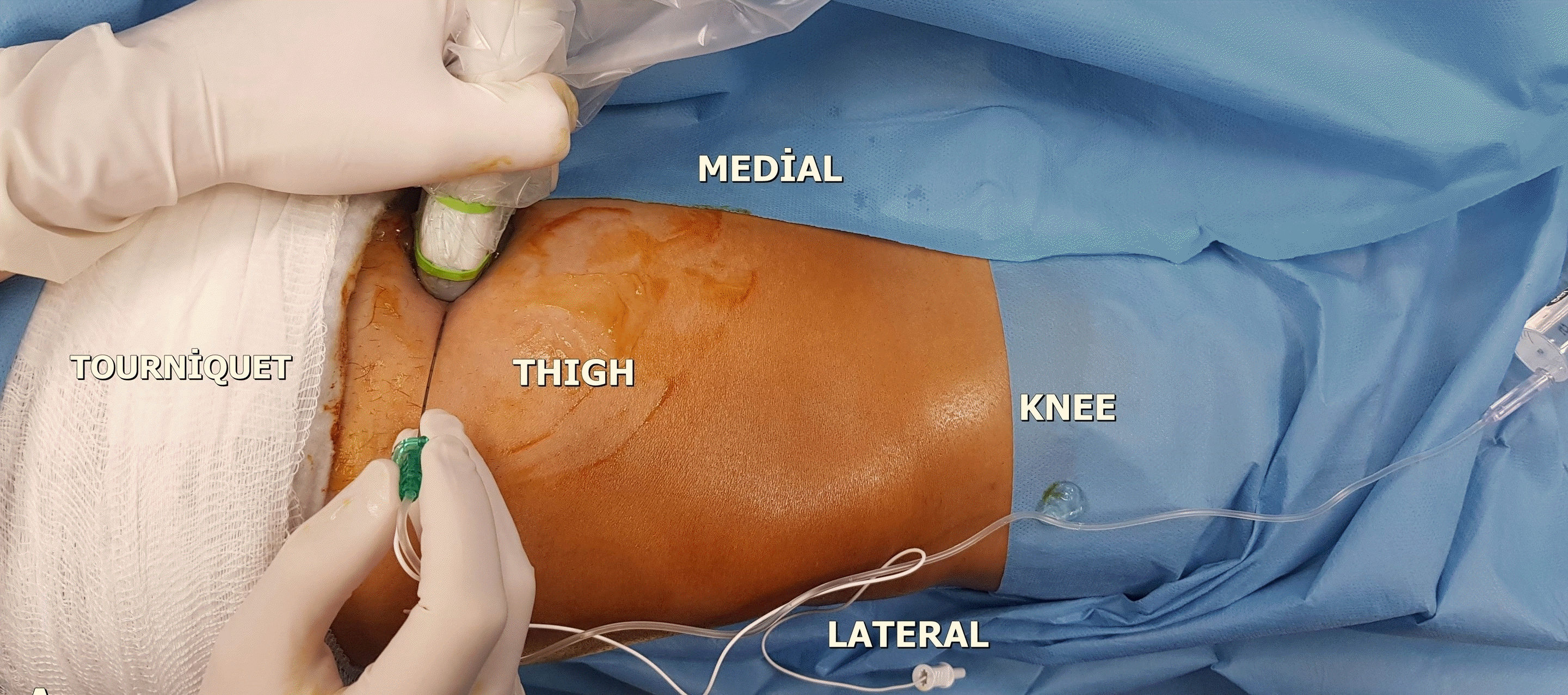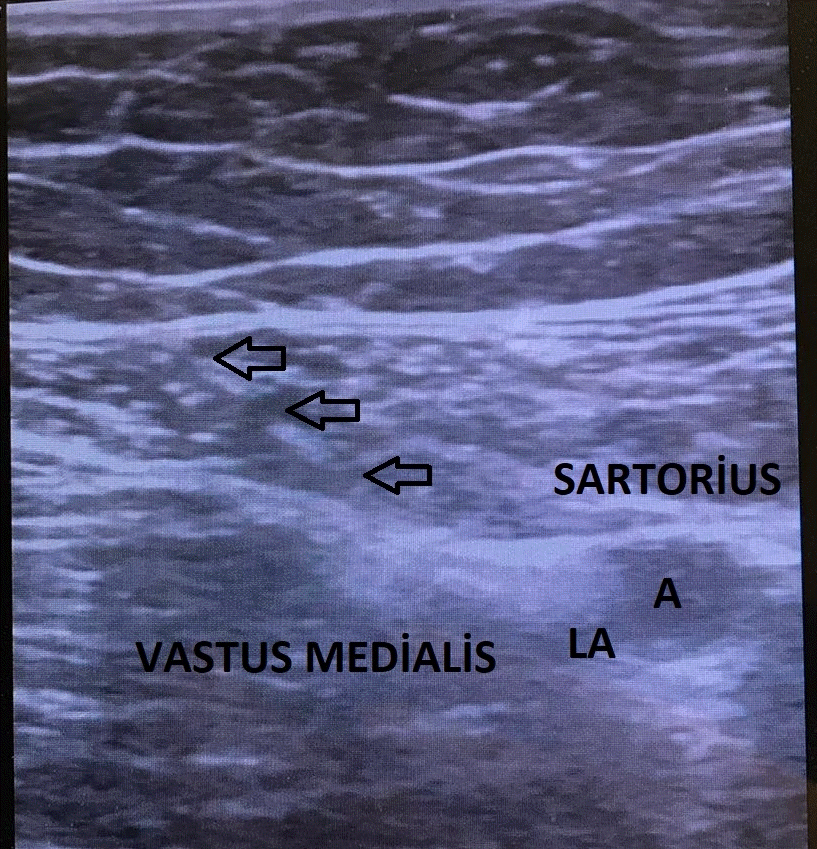1. Kim S, Bosque J, Meehan JP, Jamali A, Marder R. Increase in outpatient knee arthroscopy in the United States: a comparison of National Surveys of Ambulatory Surgery, 1996 and 2006. J Bone Joint Surg Am. 2011; 93:994–1000.

2. Lohmander LS, Thorlund JB, Roos EM. Routine knee arthroscopic surgery for the painful knee in middle-aged and old patients--time to abandon ship. Acta Orthop. 2016; 87:2–4.

3. Rahimzadeh P, Faiz HR, Imani F, Hobika GG, Abbasi A, Nader ND. Relieving pain after arthroscopic knee surgery: ultrasound-guided femoral nerve block or adductor canal block? Turk J Anaesthesiol Reanim. 2017; 45:218–24.

4. Hanson NA, Derby RE, Auyong DB, Salinas FV, Delucca C, Nagy R, et al. Ultrasound-guided adductor canal block for arthroscopic medial meniscectomy: a randomized, double-blind trial. Can J Anaesth. 2013; 60:874–80.

5. Kejriwal R, Cooper J, Legg A, Stanley J, Rosenfeldt MP, Walsh SJ. Efficacy of the adductor canal approach to saphenous nerve block for anterior cruciate ligament reconstruction with hamstring autograft: a randomized controlled trial. Orthop J Sports Med. 2018; 6:2325967118800948.

6. Dong CC, Dong SL, He FC. Comparison of adductor canal block and femoral nerve block for postoperative pain in total knee arthroplasty: a systematic review and meta-analysis. Medicine (Baltimore). 2016; 95:e2983.
7. Zhao XQ, Jiang N, Yuan FF, Wang L, Yu B. The comparison of adductor canal block with femoral nerve block following total knee arthroplasty: a systematic review with meta-analysis. J Anesth. 2016; 30:745–54.

8. Li D, Yang Z, Xie X, Zhao J, Kang P. Adductor canal block provides better performance after total knee arthroplasty compared with femoral nerve block: a systematic review and meta-analysis. Int Orthop. 2016; 40:925–33.

9. Ilfeld BM, Duke KB, Donohue MC. The association between lower extremity continuous peripheral nerve blocks and patient falls after knee and hip arthroplasty. Anesth Analg. 2010; 111:1552–4.

10. Burckett-St Laurant D, Peng P, Girón Arango L, Niazi AU, Chan VW, Agur A, et al. The nerves of the adductor canal and the innervation of the knee: an anatomic study. Reg Anesth Pain Med. 2016; 41:321–7.
11. Manickam B, Perlas A, Duggan E, Brull R, Chan VW, Ramlogan R. Feasibility and efficacy of ultrasound-guided block of the saphenous nerve in the adductor canal. Reg Anesth Pain Med. 2009; 34:578–80.

12. Jiang X, Wang QQ, Wu CA, Tian W. Analgesic efficacy of adductor canal block in total knee arthroplasty: a meta-analysis and systematic review. Orthop Surg. 2016; 8:294–300.

13. Lund J, Jenstrup MT, Jaeger P, Sørensen AM, Dahl JB. Continuous adductor-canal-blockade for adjuvant post-operative analgesia after major knee surgery: preliminary results. Acta Anaesthesiol Scand. 2011; 55:14–9.

14. Vora MU, Nicholas TA, Kassel CA, Grant SA. Adductor canal block for knee surgical procedures: review article. J Clin Anesth. 2016; 35:295–303.

15. Arora S, Sadashivappa C, Sen I, Sahni N, Gandhi K, Batra YK, et al. Comparação do bloqueio do canal adutor para analgesia em cirurgia artroscópica com ropivacaína isolada e ropivacaína + clonidina [Comparison of adductor canal block for analgesia in arthroscopic surgery with ropivacaine alone and ropivacaine and clonidine]. Braz J Anesthesiol. 2019; 69:272–8.
16. Jaeger P, Nielsen ZJ, Henningsen MH, Hilsted KL, Mathiesen O, Dahl JB. Adductor canal block versus femoral nerve block and quadriceps strength: a randomized, double-blind, placebo-controlled, crossover study in healthy volunteers. Anesthesiology. 2013; 118:409–15.
17. Andersen LØ, Husted H, Otte KS, Kristensen BB, Kehlet H. A compression bandage improves local infiltration analgesia in total knee arthroplasty. Acta Orthop. 2008; 79:806–11.

18. Nair A, Dolan J, Tanner KE, Kerr CM, Jones B, Pollock PJ, et al. Ultrasound-guided adductor canal block: a cadaver study investigating the effect of a thigh tourniquet. Br J Anaesth. 2018; 121:890–8.

19. Andersen HL, Andersen SL, Tranum-Jensen J. The spread of injectate during saphenous nerve block at the adductor canal: a cadaver study. Acta Anaesthesiol Scand. 2015; 59:238–45.

20. Taha AM, Abd-Elmaksoud AM. Lidocaine use in ultrasound-guided femoral nerve block: what is the minimum effective anaesthetic concentration (MEAC90)? Br J Anaesth. 2013; 110:1040–4.
21. Faul F, Erdfelder E, Lang AG, Buchner A. G*Power 3: a flexible statistical power analysis program for the social, behavioral, and biomedical sciences. Behav Res Methods. 2007; 39:175–91.

22. Gautier PE, Hadzic A, Lecoq JP, Brichant JF, Kuroda MM, Vandepitte C. Distribution of injectate and sensory-motor blockade after adductor canal block. Anesth Analg. 2016; 122:279–82.

23. Jæger P, Jenstrup MT, Lund J, Siersma V, Brøndum V, Hilsted KL, et al. Optimal volume of local anaesthetic for adductor canal block: using the continual reassessment method to estimate ED95. Br J Anaesth. 2015; 115:920–6.
24. Yuan SC, Hanson NA, Auyong DB, Choi DS, Coy D, Strodtbeck WM. Fluoroscopic evaluation of contrast distribution within the adductor canal. Reg Anesth Pain Med. 2015; 40:154–7.





 PDF
PDF Citation
Citation Print
Print






 XML Download
XML Download